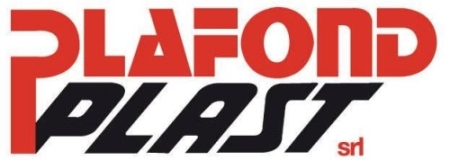Cautions and regulations for the correct use of PVC pipes equipped with spigot joints and elastomeric sealing gaskets
Excavation and laying
The digging of the trench must be carried out in compliance with project standards and following the Special Contract Specifications which refer to fixed section excavation for the laying of the pipelines, taking the utmost care and attention to:
• level out the bottom of the trench, eliminating bumps, dips and stones;
• spread sand or sifted loose soil on the bottom of the trench up to a thickness of 15 cm;
• cover and backfill the pipeline with sand or loose soil up to a thickness of 20 cm from the generatrix, taking care to leave the joints uncovered, as they will only be buried after final testing.
Execution of the spigot joints with elastomeric sealing gasket
1. Ensure that one of the pipe ends is correctly bevelled;
2. Thoroughly clean the parts to be joined, ensuring that they are in perfect condition: temporarily remove the sealing gasket, if already installed;
3. Draw a reference line on the male part of the pipe, proceeding as follows:
• slide the pipe into the spigot as far as it will go, and mark the position reached;
• pull the pipe out by at least 1 cm;
• mark the new position reached in a visible manner on the pipe, as this is the reference line.
4. Insert the sealing gasket in its seat ensuring that the outer crown of the gasket, with its smooth or tapered surface, depending on the type, adheres to the wall of the groove in the spigot. The smaller bulge in the internal crown of the sealing gasket must be facing towards the mouth of the spigot;
5. Lubricate the internal surface of the sealing gasket and the outer surface of the end of the male pipe with soapy water. Do not use oils or grease which in addition to damaging the sealing gasket also prevent hydraulic tightness;
6. Slide the end of the pipe into the spigot up to the reference line, taking care to bring the two coupling segments into line, so that the sealing gasket does not come out of its seat.
In-line testing for pipelines under pressure
This test refers to the pipeline with its joints, bends, T-joints, branches and reductions, excluding any hydraulic accessories, i.e.: gate valves, vents, bottom outlets, hydrants, etc. In-line hydraulic testing on the PVC pipes will be conducted on sections up to 500 m. in length. The backfilling of the pipeline as described in the chapter “Excavation and laying” shall leave the joints uncovered for the purpose of inspection, so that their hydraulic tightness can be checked.
• Fill the pipe with water from the lowest point of the line where the pressure gauge will be installed;
• expel the air by opening the vents;
• start to pressurise the line rising gradually and as rapidly as possible until working pressure is reached. This will be maintained for 2 hours in order to allow the joints to settle. If this test is successful, the pressure will be increased to 1.5 times working pressure, and kept constant for a period of 2 hours;
• if this test is successful, the joints will be completely backfilled.
General conditions of sale
• These conditions of sale are tacitly accepted by the Customer on the placing of the order.
• The order is subordinated to the approval of the seller.
• Delivery times are not binding and no compensation is due for late delivery.
• The merchandise always travels on behalf of the Customer and at the latter’s own risk and responsibility, even if sold with “free to destination” delivery terms.
• The material shipped using the seller’s transport must be checked at the time of delivery and the delivery note duly signed to attest to this inspection.
• The seller does not accept any liability for how the merchandise sold is used: any complaints regarding the quality of the product shall be made by registered letter within 8 days of the date of delivery of the merchandise. However, liability will be limited to the replacement of any material acknowledged by the seller to be defective. No compensation will be acknowledged for transport or installation costs or for expenses deriving from damage to third parties.
• Payments shall be made to our domiciled address.
• Once the payment term indicated on the invoice has elapsed, interest will be charged.
• The ownership of the merchandise is only transferred to the Customer when the respective invoice is paid in full.
• For any disputes arising the place of jurisdiction will be the Court of Parma.





